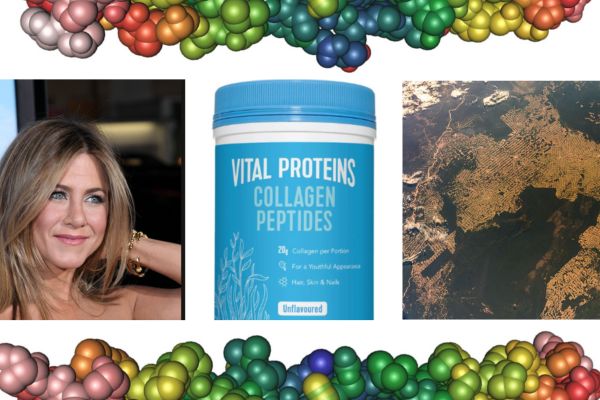
The collagen market is poised for substantial growth, reflecting a diversification of applications and an increasing consumer focus on health and wellness products. Based on analyses from three reputable sources – Mordor Intelligence, MarketsandMarkets, and Grand View Research – the industry’s Compound Annual Growth Rate (CAGR) averages to 8.05%.
Using the average CAGR and starting from a global market value of USD 5.1 billion in 2023, the collagen industry is estimated to reach an average value of approximately USD 8.77 billion by 2030. This forecast underscores the industry’s dynamic potential and the growing appeal of collagen products across various sectors, including nutritional supplements, food and beverages, cosmetics, and healthcare. The convergence of these growth trends highlights the collagen market’s robust outlook, driven by consumer demand for products that support health, beauty, and wellness.
However, the Pulitzer Center’s investigation into the collagen industry reveals its impact on deforestation and Indigenous rights abuses in the Amazon. Bovine collagen, a “by-product” of Brazil’s cattle industry, contributes to 80% of Amazon forest loss. The report links this deforestation to collagen producers, including Nestlé-owned Vital Proteins, endorsed by Jennifer Aniston and sold globally. The first investigation of its kind traced deforestation to suppliers connected to Darling Ingredients’ subsidiaries, revealing significant environmental implications.
Amazon Fruits as Sustainable Collagen Sources
The Amazon rainforest, often referred to as the Earth’s lungs, is not only crucial for global climate regulation but also a treasure trove of biodiversity, offering a plethora of natural resources. Among these resources, certain fruits have been identified for their potential in skincare and health, specifically in collagen production. This article delves into the findings of three studies that highlight how Amazonian fruits like acai, cupuaçu, camu-camu and aguaje could revolutionize the collagen market, offering sustainable alternatives to conventional sources.
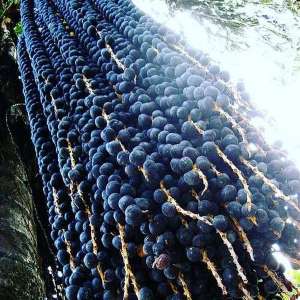
Acai: A Superfruit for Skin Health
The study by Xiong et al. (2020) published in Food & Function examines the phenolic content and anti-inflammatory properties of acai berries, both in their industrially processed and non-processed forms. Acai berries are renowned for their high antioxidant levels, which play a crucial role in skin health and regeneration. The research demonstrates that acai’s phenolic compounds significantly contribute to its anti-inflammatory properties and its ability to aid in dermal wound healing. This suggests that acai could be an effective natural ingredient in collagen production, promoting skin repair and health without the environmental cost of deforestation linked to traditional collagen sources.
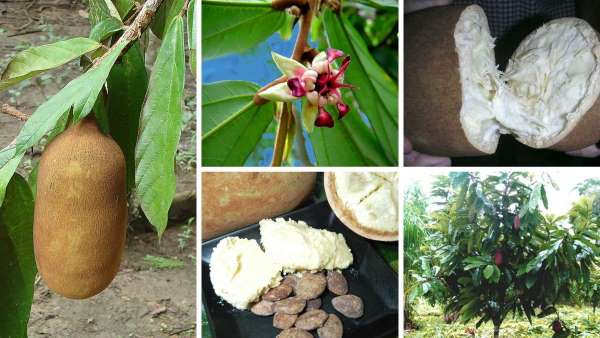
Cupuaçu: A Novel Ingredient for Skin Regeneration
In a 2022 study published in Pharmaceutics, Barbalho et al. investigate the skin regenerative potential of Cupuaçu (Theobroma grandiflorum) seed extract. Cupuaçu, a native fruit to the Amazon, is explored for its application in a topical formulation based on chitosan-coated nanocapsules. The study’s findings suggest that cupuaçu seed extract possesses significant skin regenerative properties, making it a promising candidate for developing natural, sustainable skincare products. This aligns with the increasing demand for eco-friendly and effective cosmetic ingredients, spotlighting the potential of Amazonian fruits in the beauty industry.
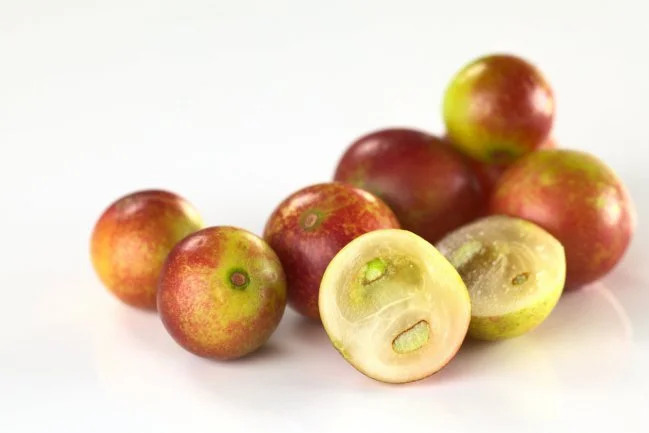
Camu-camu: the king of Vitamin C and its potential as a natural collagen producer.
In their study, “Camu-camu (Myrciaria dubia): Tropical fruit of excellent functional properties that help to improve the quality of life,” Arellano-Acuña, Rojas-Zavaleta, and Paucar-Menacho (2016) mention the remarkable health benefits of Camu Camu, a fruit native to the Amazon rainforest. Highlighted for its superior Vitamin C content, the research underscores Camu Camu’s pivotal role in collagen synthesis, a protein fundamental to the health and strength of bones, muscles, tendons, ligaments, teeth, gums, connective tissues, and blood vessels. This potent antioxidant not only aids in the structural integrity of the body but also offers therapeutic benefits for obesity and its related conditions, migraine and headaches, diabetes, arthritis, and severe colds and flu.
Highlights from the Study:
– Collagen Synthesis: Camu Camu’s high Vitamin C content is crucial for producing collagen, ensuring the resilience and functionality of the body’s structural components.
– Support for Bones and Muscles: The fruit’s properties aid in the development and maintenance of bones and muscles, emphasizing its importance in physical health.
– Oral Health: It contributes to the health of teeth and gums, highlighting its role in dental wellness.
– Vascular and Connective Tissue Health: Strengthens connective tissues and blood vessels, crucial for maintaining a healthy circulatory system.
– Addressing Obesity and Related Diseases: The study notes Camu Camu’s potential in managing obesity and associated health issues, offering a natural approach to weight management.
– Natural Remedy for Migraines and Chronic Conditions: Demonstrates effectiveness in mitigating migraines, headaches, diabetes, and arthritis, providing a holistic alternative to conventional treatments.
– Immune System Support: Particularly beneficial in combating severe colds and flu, underscoring its potential in enhancing immune defenses.
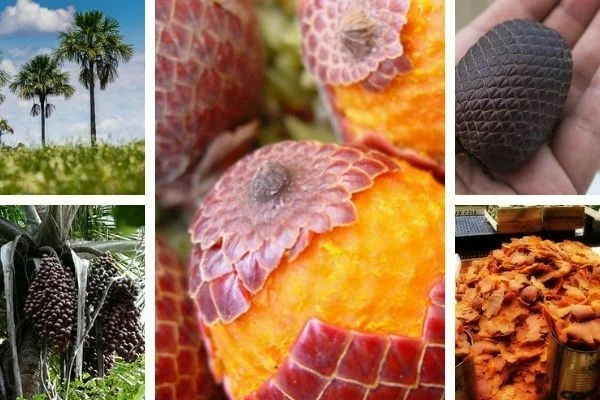
Exploring the Potential of Aguaje (Mauritia flexuosa) for Collagen Production
In the insightful study by Cusco Vásquez (2009), attention is drawn to Aguaje (Mauritia flexuosa L. f.), a fruit endemic to the Amazon, celebrated for its skin health benefits, notably in stimulating collagen production. The research’s primary goal was to craft a dermocosmetic cream combining Aguaje and Copaifera reticulata var. peruviana to ascertain its effect on enhancing skin repair in Mus musculus Balb c mice models.
The combined Aguaje and copaiba cream showcased superior skin repair capabilities, achieving a healing rate of 57.4%. Histological assessments of the healed skin revealed significant outcomes, including initial stages of re-epithelialization, formation of granulation tissue, and crucially, an uptick in collagen presence in the dermis. These findings highlight Aguaje’s potent ability to stimulate collagen production, crucial for skin regeneration and healing.

The Amazon Rainforest: A Treasure for the Cosmetic Industry
The book chapter by Torres and Cruz (2023) in “Drug Discovery and Design Using Natural Products” broadens the perspective by discussing various natural products from the Amazon utilized by the cosmetic industry. This includes an array of fruits known for their rich bioactive compounds beneficial for skin health and cosmetic applications. The chapter underscores the Amazon’s potential as a source of natural, sustainable ingredients for the cosmetic industry, including collagen production. By harnessing these resources responsibly, the cosmetic industry can contribute to the conservation of the Amazon while meeting consumer demands for natural and sustainable products.
Towards Sustainable Collagen Sources
These studies collectively emphasize the untapped potential of Amazonian fruits as sustainable, natural sources for collagen production. By integrating these fruits into the collagen and cosmetic industries, it is possible to reduce reliance on animal-based collagen sources, which are often linked to environmental issues like deforestation and loss of biodiversity. The shift towards plant-based collagen sources not only aligns with growing consumer preferences for sustainable and ethical products but also offers a pathway to preserve the Amazon rainforest’s rich biodiversity.
In conclusion, the Amazon rainforest’s fruits, such as acai and cupuaçu, represent a promising frontier in the search for sustainable collagen sources. As the world moves towards greener alternatives, these fruits could play a pivotal role in promoting skin health and environmental conservation simultaneously. The ongoing research and development in this field are crucial for unlocking the full potential of the Amazon’s natural bounty, offering hope for both the planet and the future of skincare.

Daniel Osorio holds a BA in Social Communication with a mention in Communication for Humanistic Development (Universidad de Los Andes, 2005). Film and TV director and screenwriter. Specialist in Digital Marketing (SEO, SEM, Adwords, Adsense). General Manager (CEO) at DMT Agency. He is the founding editor of the portal delamazonas.com among others.
This post is also available in:
![]() Español (Spanish)
Español (Spanish)
